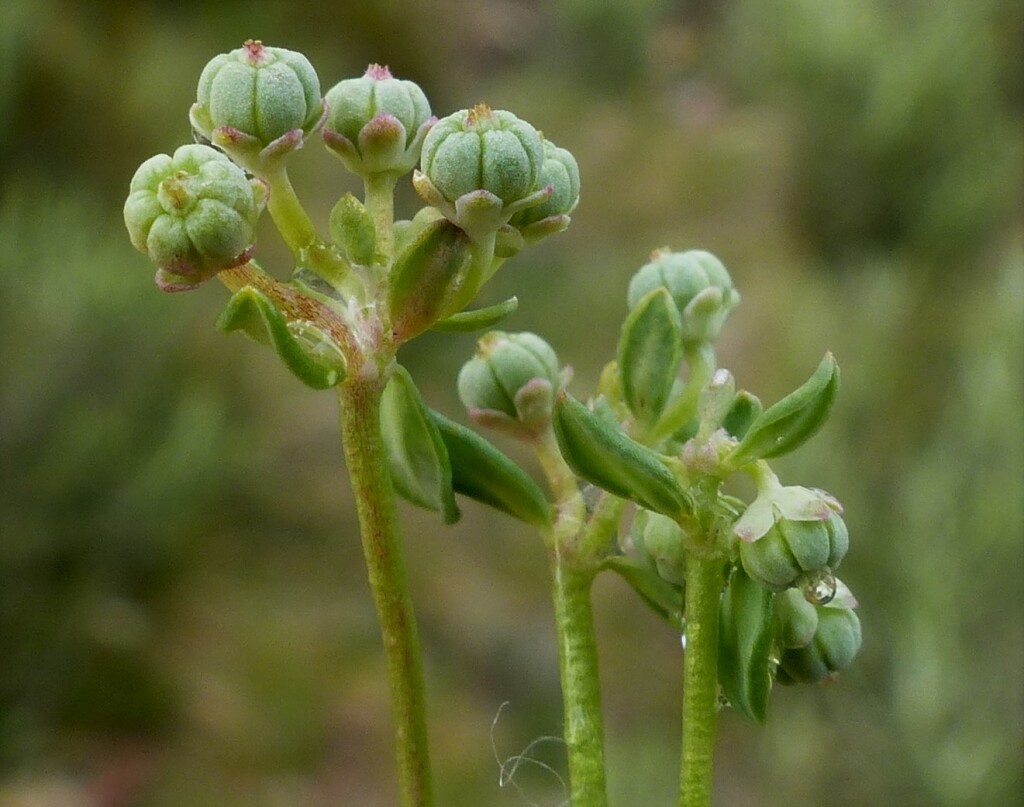Poranthera microphylla
Brongn. Small PorantheraSuberect or ascending annual herb to c. 15 cm high, glabrous, often somewhat glaucous. Leaves subopposite or opposite, sessile or with petioles to 1.5 mm long; lamina spathulate to obovate, 6–12 mm long, 1–4 mm wide, obtuse to rounded, usually shortly apiculate, margins flat to recurved; stipules entire, membranous, 0.8–1.3 mm long. Inflorescences of short racemes, 0.3–0.8 cm across; rachis usually elongating after anthesis; bracts narrow-obovate, to c. 4 mm long. Pedicels to c. 1.5 mm long, those of females elongating to c. 9 mm in fruit. Sepals usually 5, obovate, 0.5–1.5 mm long, white, green or pink. Petals oblanceolate, to c. 0.5 mm long, white or pink. Male flowers with 5 stamens, filaments free; female flowers with 3 deeply 2-partite styles. Capsule 1.5–2.5 mm diam., 3-lobed; seeds wedge-shaped, 0.5–1 mm long, tuberculate, white. Flowers mostly Sep.–Apr.
LoM, MuM, Wim, GleP, Brid, VVP, VRiv, RobP, GipP, OtP, WaP, Gold, CVU, GGr, DunT, NIS, EGL, EGU, WPro, HSF, HNF, OtR, Strz, MonT, HFE, VAlp. All states. New Zealand. Widespread and often locally common throughout most of the state in a wide variety of habitats from near sea-level to subalps, but generally replaced by P. oreophila at higher altitudes.
Jeanes, J.A. (1999). Euphorbiaceae. In: Walsh, N.G.; Entwisle, T.J., Flora of Victoria Vol. 4, Cornaceae to Asteraceae, pp. 55–82. Inkata Press, Melbourne.
 Spinning
Spinning




